 Facebook
Facebook
 X
X
 Instagram
Instagram
 TikTok
TikTok
 Youtube
Youtube
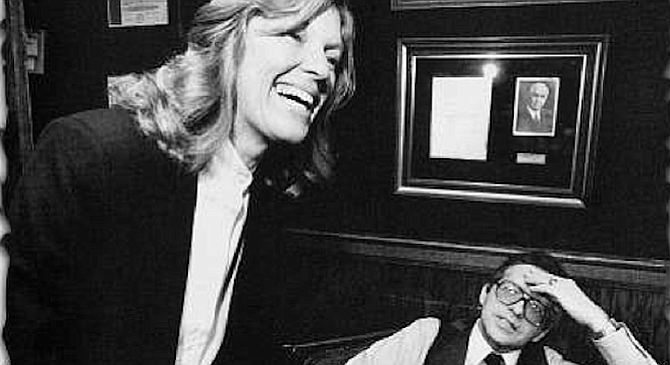
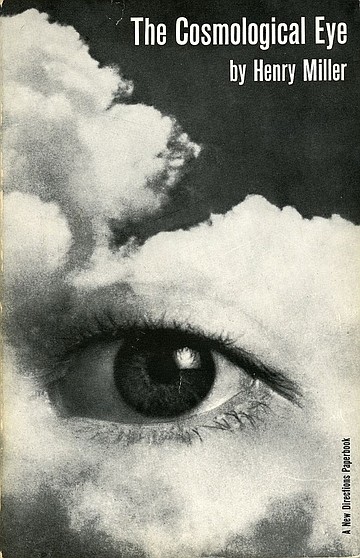
THE MOST IMPORTANT ENCOUNTER of my life was with Emma Goldman in San Diego, California. She opened up the whole world of European culture for me and gave a new impetus to my life, as well as direction. I was violently interested in the I. W. W. movement at the time it was in swing, and remember with great reverence and affection such people as Jim Larkin, Elizabeth Gurley Flynn, Giovanitti and Carlo Tresca. I was never a member of any club, fraternity, social or political organization.
As a youngster I had been led from one church to another — first Lutheran, then Presbyterian, then Methodist, then Episcopalian. I later followed with great interest the lectures at the Bahai Center and the Theosophists and New Thoughters and Seventh Day Adventists and so on. I was thoroughly eclectic and immune. The Quakers and the Mormons impressed me by their integrity and sincerity — and by their self-sufficiency. I think they make the best Americans.
Henry Miller The Cosmological Eye 1939
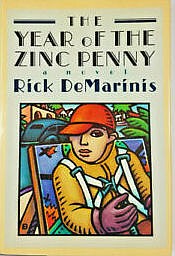
WE HAD BEEN IN TIJUANA showing Uncle Gerald a good time. The three of them — my mother, my new stepfather, and Uncle Gerald — went nightclubbing, arm in arm. They left me in the back seat of my stepfather’s 1928 Cadillac to wait for them. The kinds of nightclubs they went to would not let in children. I was curious about these nightclubs but too young to be able to imagine what went on inside.
It was a Saturday night and World War II was in full swing somewhere else. Street whores squinted into the Cadillac’s windows, checking me out. Their loose, pendulous breasts were rippled by the pulsing neon of Avenida Revolucion. Kids younger than me pulled open the doors of the Cadillac and scrambled across the rich mohair upholstery, screaming hilarious Spanish to each other, paying no attention to me at all. I was scared of them, but it was my own fault. I had insisted on coming along to Tijuana....
There was no sound in the dark fort other than our heavy breathing. We sat there for several minutes, listening to our lungs empty and till. We were in our pajamas, shivering.
“I’m going to join the American marines,” William said.
“You can’t,” I said. “You’ve got to be at least seventeen.”
“I look seventeen,” he said. “You can get a fake birth certificate in Tijuana.”
What did he know of Tijuana? He was from Canada, a thousand miles north. “I’ve been there,” I said, casually.
“Did you get a dose?” he said.
I didn’t know what he meant.
I knew that ‘dos’ was Mexican for ‘two.’ So, (a 'dos’ must mean a pair. Did I get a pair. I still didn’t know what he was talking about.
After a minute he laughed. “Where’ve you been all your life?” he asked.
“Mostly in Montana,” I said.
“That figures.”
Rick DeMarinis The Year of the Zinc Penny 1989
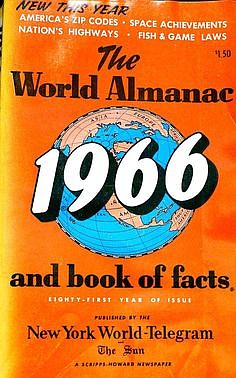
SAN DIEGO (pop. 628,200) is the largest military and naval base, an electronic center, outlet for Imperial Valley products and fishing-canning port. It has major aircraft-missile plants....
San Diego Zoo.... Rare species include proboscis monkeys, koalas, Mantell’s kiwi, pigmy hippo, snow leopard, okapi, sacred crane, Indian and African square-lip rhinos, 77 species of primates and 90 species of parrots. Also, ocellated turkeys, Galapagos tortoises, bush dogs, Steller’s sea eagle, Hawaiian ducks, Tasmanian devils, wombats, monkey-eating eagles, birds of paradise and all 6 species of flamingo.
The World Almanac and Book of Facts 1966
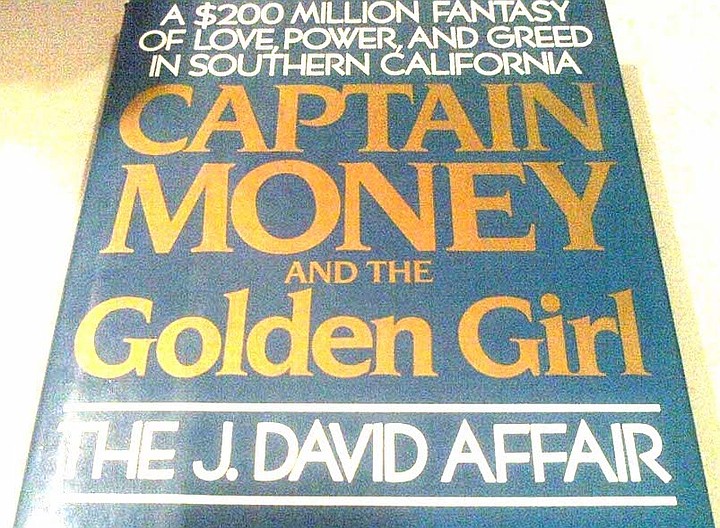
NANCY HOOVER WAS OUT TO TAKE OVER and reform the wealthy, tradition-bound ruling class of San Diego, the nation’s eighth largest city and easily one of its most conservative. Like many of her fellow liberals and Yuppies, she preached that the San Diego establishment is callous, selfish, and too tolerant of financial scoundrels.
To an extent, she had a point. In San Diego it’s sometimes hard to distinguish the landed gentry from the light-fingered gentry. Cozeners — accepted by the ruling establishment — have been preying on San Diego investors for years. They sun themselves on the beaches in the upscale coastal town of La Jolla and ride to hounds in the aristocratic inland community of Rancho Santa Fe. They are indefatigable party-goers, apotheosized almost daily in the society columns of the local newspapers, despite, in some cases, their records of convictions.
And in San Diego, as in many other cities, it’s difficult to distinguish the recidivists from the philanthropists. That’s because often they are one and the same. The habitual fast-buck operators buy respectability by pouring money into local charities — always with maximum public exposure.
San Diego’s financial scoundrels of the recent past have fallen into two categories. There were the acquisitors, the conglomerateurs — those building a massive empire through accounting voodoo and inflated stock. And then there were the fleecers of the innocent — those promising unbelievably high returns to naive investors....
Clearly it was the ideal market for Captain Money and the Golden Girl. They didn’t dream small dreams. [J. David “Jerry”] Dominelli intended to combine the dubious strategy of the little-people fleecer with the dubious strategy of the conglomerate builder. He promised investors returns of up to 50 percent a year, and he also planned to erect a diversified financial giant modeled on Wall Street’s Goldman, Sachs.
Some say it could only have been attempted in Southern California. They theorize that the constant sunshine softens San Diegans up for swindlers.
The sun, in fact, is partially to blame. Because it shines all year, people flock to San Diego. In the last two decades, San Diego has consistently been one of the fastest-growing metropolitan areas in the U.S., and three-fourths of that growth has come from in-migrants. Often there are fifty to one hundred applicants for one job opening, and there are thousands of well-trained, retired military officers on fat pensions who are willing to work for low wages.
Conspicuous consumption is omnipresent. San Diegans buy more Mercedes-Benzes than Plymouths. Housing prices have been pushed sky-high (averaging $133,000), but incomes are only slightly higher than the national urban average. The upwardly mobile must get deeply into debt and then have to come up with big incomes to meet the monthly mortgage.
For many that means taking risks — mortgaging to the eyeballs and rolling the dice.
San Diego is full of “high-stakes poker players,” notes Howard Matloff, a San Diego lawyer who specializes in white-collar crime. There’s no Old Wealth watchdog to keep a lid on the fun. Almost everybody is nouveau riche, and a laissez-faire mentality rules.
Then, there’s what Matloff calls “the Disneyland effect.” Many people have made a bundle in local real estate. In the late 1970s, average real estate prices in San Diego rose 25 percent a year, and amateurs routinely turned 100 percent profits in real estate deals. Thus, J. David’s promise of a 50 percent annual return was not greeted with the skepticism it deserved....
Besides the greed and glitter, there’s another factor: San Diego sits on the Mexican border It’s a way station for drugs moving into the U.S. from Central and South America. Drug dealers’ money has to be “laundered,” that is, transformed into respectable money or credit.
Some entrepreneurs with foreign-banking connections will provide this service for a fee of around 10 percent. This means there is always a lot of illicit cash seeking a licit home in San Diego, and that kind of lucre often finds its way into local swindles.
Donald C. Bauder Captain Money and the Golden Girl: The J. David Affair 1985

THE FIRST SAN DIEGO BOOM occurred soon after the turn of 1850. This one was the most disastrous, for the little town had no decent drinking water. But because of San Diego’s reputation as a “healthful place of sun and climate,” indigent refugees from the northern gold fields landed here to recuperate if possible. Instead, due to the shortage of drinkable water as well as the shortage of making a living, the homeless people formed their own camps on the beaches. Others made miserable homes for themselves in the caves of Point Loma. These people were accompanied by northern cut-throats, too, who just managed to escape the northern Vigilantes. All types huddled together, the sick and the well. Deaths were so numerous that the State finally had to take a hand by aiding the impoverished.
Max Miller It Must Be the Climate 1941
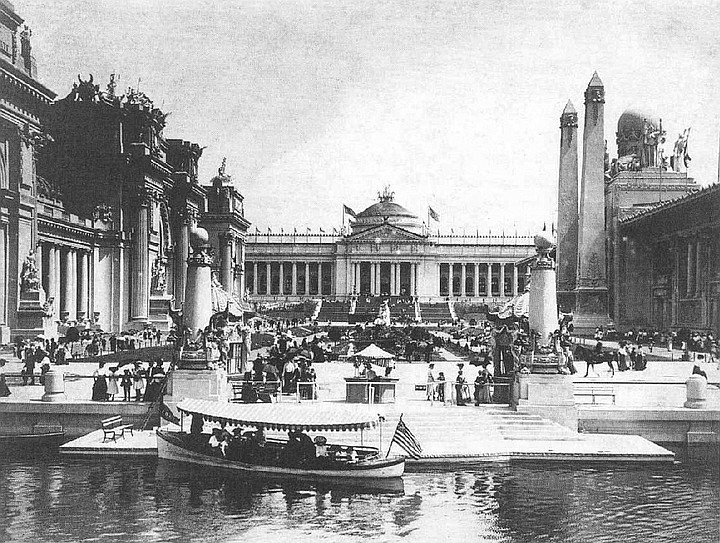
THE CORONADO SPRINGS are on the finger of land upon which the great hotel is builded, on San Diego Bay, and are said to compare favorably with the Bethesda Spring of Waukesha, Wisconsin. The waters are called aperient, diuretic and tonic.
The Tia Juana Hot Springs are just across the line in Lower California, but are tributary to San Diego.
Carlsbad, north of San Diego, is similar to the celebrated Carlsbad Springs of Germany and the Kissingen Springs of Bohemia. The Temecula Hot Springs are the most noted in San Diego county.
California Louisiana Purchase Exposition Commission California, Its Products, Resources, Industries and Attractions 1904
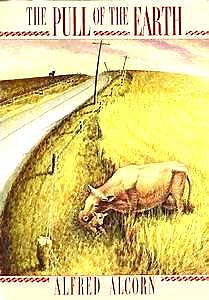
"I THINK I'M PREGNANT"
“How do you know?”
“I just know.”
He took her hand and held it firmly, the flats of his fingers pressing against her palm. For what seemed a long time he said nothing. Then his words came in a low hot whisper and he bent toward her, pressuring her with his hands and his eyes. “Let’s get away from here. Just pack a few things. I’ve got some money. We can take the car.”
It was utterly impossible, of course, and the only left to do. She heard herself ask, "Where?"
“San Diego. iVe got friends there. I could get a job.”
That might have been true, but Janet Vaughn, still too sober for mad dreams, was sipping her wine and thinking how she couldn’t leave her new kitchen behind. That was foolishness, but she needed something trivial right then to anchor the immensity of the thing. Her mind kept opening and closing on the fact that if she was pregnant, she had no other choice but to run away with the man.
“You gotta see it. It’s beautiful out there. It’s warm all year round with these blue skies that go on forever...” He was pitching hard and fast, and his eyes, glinting with something of final desperation, held hers. “I mean they’ve got a park there, Balboa Park, that’s as big as all of Boston. Just the park. You gotta see it. They’ve got these little canyons in it with red and purple flowers growing up the walls and these Spanish kinds of buildings and a zoo and lawns and gardens...”
“I can’t.”
“Sure you can.”
“Hedley...”
“Hedley ain’t gonna care as long as he’s got the farm. You know that. He’s gonna kill himself on that place whether you’re there or not.”
She knew he was right despite the hustle in his voice.
“Bobby...” she started, and the tension lifted to her chest and funneled up behind her eyes and nose at the pathos of it all.
Bobby, Ellen, Mom, Mary,
Joe Jr., the kids, Jessica Lee, the house, the farm, her kitchen — all the people and places she would have to leave. It was like death, this new life dangled before her by Lucien Quirk. The candle flame blurred through her tears.
“Ernestine will take care of Bobby,” he said.
He was stripping her of these people, perhaps of her illusions.
Did anyone really need her except him, whose needs, she sensed, might prove bottomless? Him? Who was he? Who was she, sitting in a restaurant in Lawrence, the remains of her meal turning greasy as it cooled? Was she Mrs. Hedley Vaughn of Elmsbury, Massachusetts, or Janet Gilooly again, knocked up and living in sin in San Diego, California, with the hired man? The membrane of her life stretched and tore as the impossible became the plausible and the plausible the inevitable.
“When?” she asked, as though sentence had already been passed.
“Tonight.” His hand tightened on hers and his eyes bore in. “We can go back and pack a few
things. We’ll take the car. It won’t be stealing. They owe you that much. I’ve got some money. You’ve got some money. We can make it there in less than a week.”
It was all true. They could go then. She had some money. She could claim the car. Would they even miss her after a couple of weeks? The gossip would die to legend. And who, finally, would care? And San Diego. The flutterings faded and her mood swung around. It might not be all bad. She let herself dream. She imagined blue skies and white buildings and a child in the sun. She could have her Jerusalem now. And they could just do it,
pack up and go, just the way they had gone out and bought the sink and the linoleum. They could have a little house near the beach with a new kitchen if it needed one. She laughed, happy with her dream, because that’s what it was, a dream, and dreams are safe.
Alfred Alcorn The Pull of the Earth 1985
The Reader will pay $10 for submissions to “Out of Context” that are selected for publication.
Choices must be drawn from books or out-of-town periodicals. Include author, title, date of publication, and your phone number. Send to “Out of Context,” 2323 Broadway, San Diego, CA 92102.



THE MOST IMPORTANT ENCOUNTER of my life was with Emma Goldman in San Diego, California. She opened up the whole world of European culture for me and gave a new impetus to my life, as well as direction. I was violently interested in the I. W. W. movement at the time it was in swing, and remember with great reverence and affection such people as Jim Larkin, Elizabeth Gurley Flynn, Giovanitti and Carlo Tresca. I was never a member of any club, fraternity, social or political organization.
As a youngster I had been led from one church to another — first Lutheran, then Presbyterian, then Methodist, then Episcopalian. I later followed with great interest the lectures at the Bahai Center and the Theosophists and New Thoughters and Seventh Day Adventists and so on. I was thoroughly eclectic and immune. The Quakers and the Mormons impressed me by their integrity and sincerity — and by their self-sufficiency. I think they make the best Americans.
Henry Miller The Cosmological Eye 1939

WE HAD BEEN IN TIJUANA showing Uncle Gerald a good time. The three of them — my mother, my new stepfather, and Uncle Gerald — went nightclubbing, arm in arm. They left me in the back seat of my stepfather’s 1928 Cadillac to wait for them. The kinds of nightclubs they went to would not let in children. I was curious about these nightclubs but too young to be able to imagine what went on inside.
It was a Saturday night and World War II was in full swing somewhere else. Street whores squinted into the Cadillac’s windows, checking me out. Their loose, pendulous breasts were rippled by the pulsing neon of Avenida Revolucion. Kids younger than me pulled open the doors of the Cadillac and scrambled across the rich mohair upholstery, screaming hilarious Spanish to each other, paying no attention to me at all. I was scared of them, but it was my own fault. I had insisted on coming along to Tijuana....
There was no sound in the dark fort other than our heavy breathing. We sat there for several minutes, listening to our lungs empty and till. We were in our pajamas, shivering.
“I’m going to join the American marines,” William said.
“You can’t,” I said. “You’ve got to be at least seventeen.”
“I look seventeen,” he said. “You can get a fake birth certificate in Tijuana.”
What did he know of Tijuana? He was from Canada, a thousand miles north. “I’ve been there,” I said, casually.
“Did you get a dose?” he said.
I didn’t know what he meant.
I knew that ‘dos’ was Mexican for ‘two.’ So, (a 'dos’ must mean a pair. Did I get a pair. I still didn’t know what he was talking about.
After a minute he laughed. “Where’ve you been all your life?” he asked.
“Mostly in Montana,” I said.
“That figures.”
Rick DeMarinis The Year of the Zinc Penny 1989

SAN DIEGO (pop. 628,200) is the largest military and naval base, an electronic center, outlet for Imperial Valley products and fishing-canning port. It has major aircraft-missile plants....
San Diego Zoo.... Rare species include proboscis monkeys, koalas, Mantell’s kiwi, pigmy hippo, snow leopard, okapi, sacred crane, Indian and African square-lip rhinos, 77 species of primates and 90 species of parrots. Also, ocellated turkeys, Galapagos tortoises, bush dogs, Steller’s sea eagle, Hawaiian ducks, Tasmanian devils, wombats, monkey-eating eagles, birds of paradise and all 6 species of flamingo.
The World Almanac and Book of Facts 1966

NANCY HOOVER WAS OUT TO TAKE OVER and reform the wealthy, tradition-bound ruling class of San Diego, the nation’s eighth largest city and easily one of its most conservative. Like many of her fellow liberals and Yuppies, she preached that the San Diego establishment is callous, selfish, and too tolerant of financial scoundrels.
To an extent, she had a point. In San Diego it’s sometimes hard to distinguish the landed gentry from the light-fingered gentry. Cozeners — accepted by the ruling establishment — have been preying on San Diego investors for years. They sun themselves on the beaches in the upscale coastal town of La Jolla and ride to hounds in the aristocratic inland community of Rancho Santa Fe. They are indefatigable party-goers, apotheosized almost daily in the society columns of the local newspapers, despite, in some cases, their records of convictions.
And in San Diego, as in many other cities, it’s difficult to distinguish the recidivists from the philanthropists. That’s because often they are one and the same. The habitual fast-buck operators buy respectability by pouring money into local charities — always with maximum public exposure.
San Diego’s financial scoundrels of the recent past have fallen into two categories. There were the acquisitors, the conglomerateurs — those building a massive empire through accounting voodoo and inflated stock. And then there were the fleecers of the innocent — those promising unbelievably high returns to naive investors....
Clearly it was the ideal market for Captain Money and the Golden Girl. They didn’t dream small dreams. [J. David “Jerry”] Dominelli intended to combine the dubious strategy of the little-people fleecer with the dubious strategy of the conglomerate builder. He promised investors returns of up to 50 percent a year, and he also planned to erect a diversified financial giant modeled on Wall Street’s Goldman, Sachs.
Some say it could only have been attempted in Southern California. They theorize that the constant sunshine softens San Diegans up for swindlers.
The sun, in fact, is partially to blame. Because it shines all year, people flock to San Diego. In the last two decades, San Diego has consistently been one of the fastest-growing metropolitan areas in the U.S., and three-fourths of that growth has come from in-migrants. Often there are fifty to one hundred applicants for one job opening, and there are thousands of well-trained, retired military officers on fat pensions who are willing to work for low wages.
Conspicuous consumption is omnipresent. San Diegans buy more Mercedes-Benzes than Plymouths. Housing prices have been pushed sky-high (averaging $133,000), but incomes are only slightly higher than the national urban average. The upwardly mobile must get deeply into debt and then have to come up with big incomes to meet the monthly mortgage.
For many that means taking risks — mortgaging to the eyeballs and rolling the dice.
San Diego is full of “high-stakes poker players,” notes Howard Matloff, a San Diego lawyer who specializes in white-collar crime. There’s no Old Wealth watchdog to keep a lid on the fun. Almost everybody is nouveau riche, and a laissez-faire mentality rules.
Then, there’s what Matloff calls “the Disneyland effect.” Many people have made a bundle in local real estate. In the late 1970s, average real estate prices in San Diego rose 25 percent a year, and amateurs routinely turned 100 percent profits in real estate deals. Thus, J. David’s promise of a 50 percent annual return was not greeted with the skepticism it deserved....
Besides the greed and glitter, there’s another factor: San Diego sits on the Mexican border It’s a way station for drugs moving into the U.S. from Central and South America. Drug dealers’ money has to be “laundered,” that is, transformed into respectable money or credit.
Some entrepreneurs with foreign-banking connections will provide this service for a fee of around 10 percent. This means there is always a lot of illicit cash seeking a licit home in San Diego, and that kind of lucre often finds its way into local swindles.
Donald C. Bauder Captain Money and the Golden Girl: The J. David Affair 1985

THE FIRST SAN DIEGO BOOM occurred soon after the turn of 1850. This one was the most disastrous, for the little town had no decent drinking water. But because of San Diego’s reputation as a “healthful place of sun and climate,” indigent refugees from the northern gold fields landed here to recuperate if possible. Instead, due to the shortage of drinkable water as well as the shortage of making a living, the homeless people formed their own camps on the beaches. Others made miserable homes for themselves in the caves of Point Loma. These people were accompanied by northern cut-throats, too, who just managed to escape the northern Vigilantes. All types huddled together, the sick and the well. Deaths were so numerous that the State finally had to take a hand by aiding the impoverished.
Max Miller It Must Be the Climate 1941

THE CORONADO SPRINGS are on the finger of land upon which the great hotel is builded, on San Diego Bay, and are said to compare favorably with the Bethesda Spring of Waukesha, Wisconsin. The waters are called aperient, diuretic and tonic.
The Tia Juana Hot Springs are just across the line in Lower California, but are tributary to San Diego.
Carlsbad, north of San Diego, is similar to the celebrated Carlsbad Springs of Germany and the Kissingen Springs of Bohemia. The Temecula Hot Springs are the most noted in San Diego county.
California Louisiana Purchase Exposition Commission California, Its Products, Resources, Industries and Attractions 1904

"I THINK I'M PREGNANT"
“How do you know?”
“I just know.”
He took her hand and held it firmly, the flats of his fingers pressing against her palm. For what seemed a long time he said nothing. Then his words came in a low hot whisper and he bent toward her, pressuring her with his hands and his eyes. “Let’s get away from here. Just pack a few things. I’ve got some money. We can take the car.”
It was utterly impossible, of course, and the only left to do. She heard herself ask, "Where?"
“San Diego. iVe got friends there. I could get a job.”
That might have been true, but Janet Vaughn, still too sober for mad dreams, was sipping her wine and thinking how she couldn’t leave her new kitchen behind. That was foolishness, but she needed something trivial right then to anchor the immensity of the thing. Her mind kept opening and closing on the fact that if she was pregnant, she had no other choice but to run away with the man.
“You gotta see it. It’s beautiful out there. It’s warm all year round with these blue skies that go on forever...” He was pitching hard and fast, and his eyes, glinting with something of final desperation, held hers. “I mean they’ve got a park there, Balboa Park, that’s as big as all of Boston. Just the park. You gotta see it. They’ve got these little canyons in it with red and purple flowers growing up the walls and these Spanish kinds of buildings and a zoo and lawns and gardens...”
“I can’t.”
“Sure you can.”
“Hedley...”
“Hedley ain’t gonna care as long as he’s got the farm. You know that. He’s gonna kill himself on that place whether you’re there or not.”
She knew he was right despite the hustle in his voice.
“Bobby...” she started, and the tension lifted to her chest and funneled up behind her eyes and nose at the pathos of it all.
Bobby, Ellen, Mom, Mary,
Joe Jr., the kids, Jessica Lee, the house, the farm, her kitchen — all the people and places she would have to leave. It was like death, this new life dangled before her by Lucien Quirk. The candle flame blurred through her tears.
“Ernestine will take care of Bobby,” he said.
He was stripping her of these people, perhaps of her illusions.
Did anyone really need her except him, whose needs, she sensed, might prove bottomless? Him? Who was he? Who was she, sitting in a restaurant in Lawrence, the remains of her meal turning greasy as it cooled? Was she Mrs. Hedley Vaughn of Elmsbury, Massachusetts, or Janet Gilooly again, knocked up and living in sin in San Diego, California, with the hired man? The membrane of her life stretched and tore as the impossible became the plausible and the plausible the inevitable.
“When?” she asked, as though sentence had already been passed.
“Tonight.” His hand tightened on hers and his eyes bore in. “We can go back and pack a few
things. We’ll take the car. It won’t be stealing. They owe you that much. I’ve got some money. You’ve got some money. We can make it there in less than a week.”
It was all true. They could go then. She had some money. She could claim the car. Would they even miss her after a couple of weeks? The gossip would die to legend. And who, finally, would care? And San Diego. The flutterings faded and her mood swung around. It might not be all bad. She let herself dream. She imagined blue skies and white buildings and a child in the sun. She could have her Jerusalem now. And they could just do it,
pack up and go, just the way they had gone out and bought the sink and the linoleum. They could have a little house near the beach with a new kitchen if it needed one. She laughed, happy with her dream, because that’s what it was, a dream, and dreams are safe.
Alfred Alcorn The Pull of the Earth 1985
The Reader will pay $10 for submissions to “Out of Context” that are selected for publication.
Choices must be drawn from books or out-of-town periodicals. Include author, title, date of publication, and your phone number. Send to “Out of Context,” 2323 Broadway, San Diego, CA 92102.
Comments